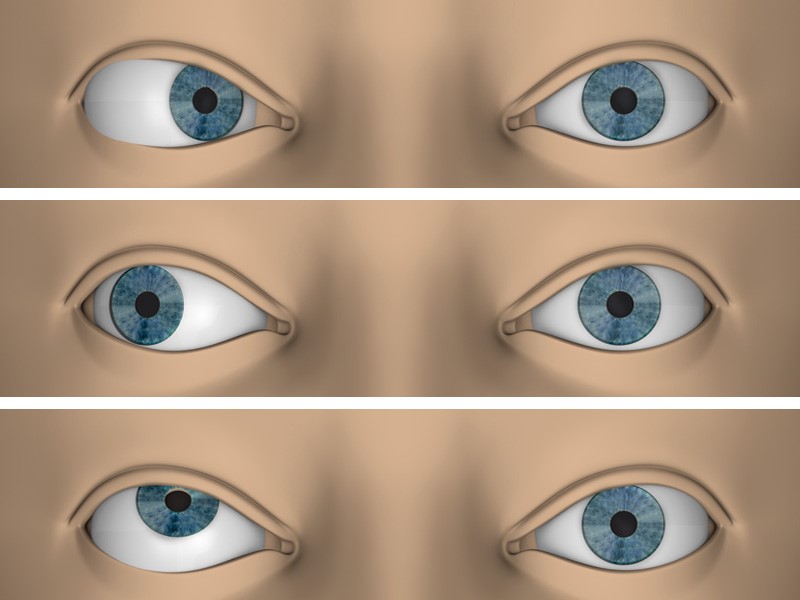Strabismus
What is it?
Strabismus is the condition when the visual axes of both eyes are not directed towards the visual object of interest. Strabismus in infants or children is the most common eye disease, as it affects 4% of children. The development and maturation of the monocular and binocular vision requires a long learning process that begins at birth and continues until eight / nine years of age. The first four are of greater progression, decreasing afterwards.
The muscles of each eye eyeball move towards the object we look, and the images captured by each eye are fused into one with characteristics of relief and depth, what is known as stereopsis, or 3D view.
The muscular coordination mechanism also allows the eyes remain fixed on a stationary object, to follow when moving and maintain fixation on the object when the observer moves. When any of hese circuits and connections fail, strabismus occurs, resulting in sensory and motor impairment.
Symptoms
The sensory alteration is the brain blocking the view of the deflected eye to avoid double vision (diplopia). If this situation persists over time, it leads to loss of vision from the turned eye, causing amblyopia, or lazy eye, as well as the binocular relationship (fusion and stereopsis). When strabismus is alternating, in either eye, ambliopia does not occur, but it does lead to loss of binocular vision. Motor impairment affects the deficit static position and muscle spasms. According to the direction, strabismus types include: horizontal (convergent or divergent), vertical, torsional or mixed. It can affect one eye or be alternating, presenting itself as constant or intermittent. Intermittent, up to six months it can be considered as physiological, given the neurological immaturity of the infant (strabismus in infants).
Treatment
Some kids are squinting due to uncorrected refractive defects (farsightedness, nearsightedness and astigmatism) as in the case of accommodative esotropia, which occurs in farsighted patients. The treatment will first be medical, in order to improve amblyopia by occlusion or penalty with filters adapted to the glass or by droplets in the better eye and refractive error where it exists, with glasses or contact lenses.
If strabismus persists, according to magnitude and clinical characteristics will be completed with surgical treatment. Strabismus surgery involves weakening the overactive muscle by modifying its insertion, and strengthening the deficit muscle by shortening it in length, in order to achieve maximum alignment.
The muscular injection of botulinum toxin can be an alternative to surgery in certain clinical cases and orthoptic exercises stimulus binocular vision, may be useful as an adjunct to surgery in selected cases.
Prevention
The neonatologist and/or pediatrician is responsible for the exploration of the newborn and its immediate evolution. Educators and teachers can be helpful to detect problems in these early ages. The specialist ophthalmologist should necessarily perform a scan at three years of age, even without the presence of any symptoms, and another one five/six years before the maturation of the visual system. Barraquer Ophthalmology Center has a Unit specialized in ocular motility and binocular vision to diagnose and treat these cases.

